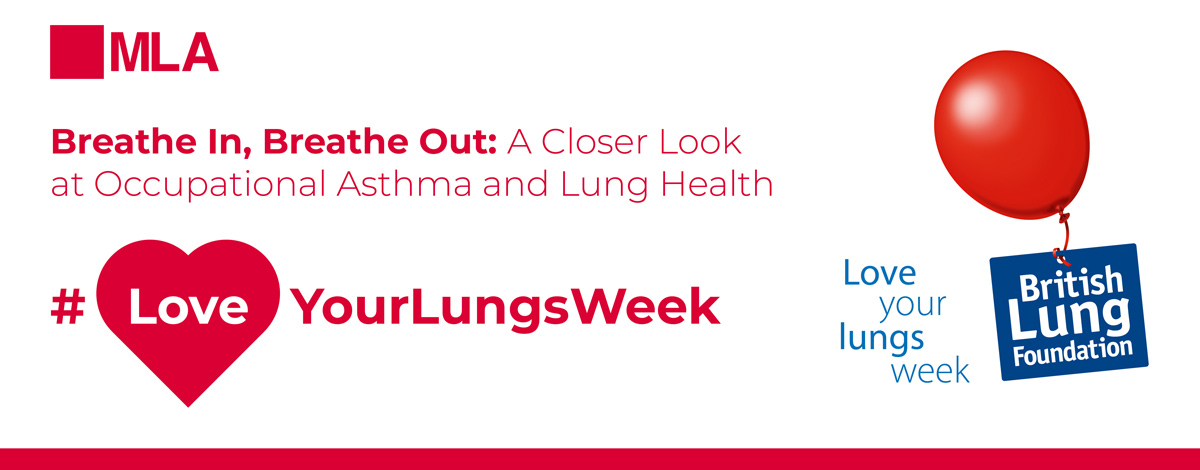Did you know your right lung is a little larger than your left lung? Or that every day you take 25,000 breaths? This week it’s the British Lung Foundation’s Love Your Lungs Week. To show our support, we’re taking a closer look at how our respiratory systems work and how the workplace can affect lung health.
What do lungs do and how do they work?
There isn’t a process in your body that doesn’t need oxygen to survive – from digesting food to moving your muscles, even thinking – every part of your body needs oxygen to function.
When you breathe in, your windpipe – also known as the trachea – carries air into the lungs, contracting the diaphragm, pulling your lungs down and stretching and expanding them. When you breathe out your body disposes of the waste gas, carbon dioxide, and the diaphragm relaxes.
Depending on the activity you’re completing your body will require more or less oxygen, which is why your brain stays in constant contact with your body and receives signals detecting the amount of oxygen and carbon dioxide in your blood. If you’re an adult who is resting, you will breathe around 12-20 times a minute. When you’re active, the delivery of oxygen to your muscles speeds up, resulting in your breathing increasing up to 40-60 times per minute; this increase in breaths taken also ensures carbon dioxide is leaving your bloodstream efficiently and not building up.
Surprising facts about lungs and the respiratory system
- Lungs are the only human body part that is capable of floating on water
- If lungs were opened flat, they would be so big that they cover the size of a tennis court
- Humans exhale up to 17.5 millilitres of water per hour
- Asthma was once believed to be a psychological issue and was treated with psychotherapy
- The average adult breathes in around 13 pints of air per minute
How can my workplace cause harm to my lungs?
Bakers, healthcare workers, welders and engineers are just some of the professions most at risk of developing occupational asthma. Occupational asthma is an allergic reaction that can occur after an individual is exposed to substances such as flour and wood dust in the workplace and can also develop after an individual is exposed to a substance they are allergic to.
When exposed to particular fumes, gases or dust, sufferers may experience a change in their airways known as the ‘hypersensitive state’ and further exposure to the substance may trigger an attack.
Symptoms and treatment for occupational asthma
There are a variety of symptoms associated with occupational asthma, including:
- A shortness of breath
- Wheezing
- Coughing
- Chest tightness
- Eye irritation
- Nasal congestion
Medications such as inhalers and modifiers are usually prescribed to reduce the symptoms of occupational asthma, but it’s important to also reduce exposure to the substance to avoid the possibility of an asthma attack and exacerbating other symptoms.
Occupational Asthma Medical Reporting at MLA
Here at MLA, we have been the undisputed industry-leading specialist in Industrial Disease Medical Reporting for almost 30 years. When instructing us for a claim, our Industrial Disease Case Manager, James Winward, will be your sole point of contact throughout and will make sure every aspect of your case is handled with meticulous care and attention.
To learn more about our Industrial Disease services please click here.

